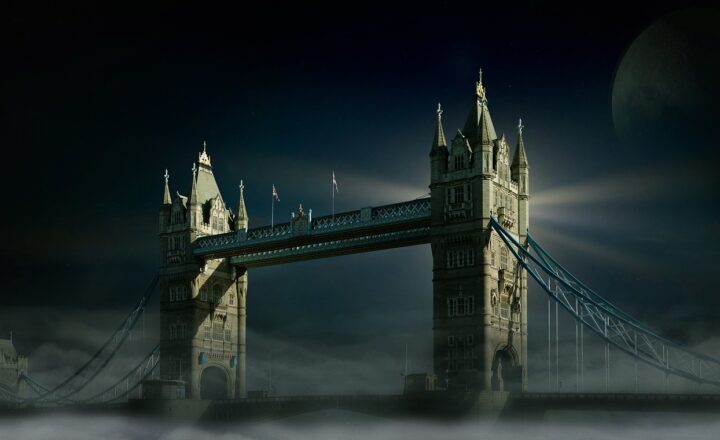The Intriguing History of the World’s Most Iconic Bridges and the Unbelievable Challenges They Overcame
November 17, 2024

Bridges have long been a symbol of ingenuity and determination throughout human history. From ancient times to the modern age, constructing these monumental structures has posed formidable challenges. Engineering prowess, vision, and sheer willpower have combined to create some of the world’s most iconic bridges, each with a story that is unique and fascinating.
1. The Great Bridge Builders of the Ancient World
Long before modern engineering techniques were developed, ancient civilizations built incredible bridges that stand as a testament to human achievement. Notable among these are the Roman Empire’s stone arch bridges.
The Romans were masters of the arch, a design that allowed them to construct bridges that not only spanned vast distances but also withstood the test of time. One of the most famous examples is the Alcántara Bridge, built in the first century AD in modern-day Spain. This bridge still stands and serves as a crucial symbol of Roman engineering.
2. The Golden Gate Bridge: Challenges and Triumphs
Constructed between 1933 and 1937, the Golden Gate Bridge in San Francisco, California, is one of the most picturesque and iconic bridges worldwide. However, its construction was fraught with challenges.
The geographical location presented significant hurdles, with strong tides and high winds at the mouth of the San Francisco Bay. The design itself was revolutionary and met skepticism from engineers who doubted the feasibility of a suspension bridge of such span. To make it feasible:
- Innovative techniques were implemented: The designer, Joseph Strauss, used new cable-spinning technology that allowed for tighter, stronger cables.
- Careful planning for safety: Safety measures included constructing a safety net that saved the lives of many workers who might have otherwise fallen.
Ultimately, it was the determination of those involved, coupled with an understanding of the elements they faced, that led to the successful completion of the bridge, which was an engineering marvel of its time.
3. The Brooklyn Bridge: A Symbol of New York
The Brooklyn Bridge is another iconic symbol of engineering excellence and resilience. Completed in 1883, it was the first steel-wire suspension bridge ever built. The vision was ambitious; it sought to connect Manhattan and Brooklyn, which required innovative construction techniques.
However, the project was plagued by:
- Health issues: Chief engineer John A. Roebling died from an accident, and his son, Washington Roebling, took over under challenging conditions.
- Caisson disease: Workers faced dangerous conditions while building the underwater caissons, leading to severe health issues known as “the bends.”
Despite these setbacks, the bridge opened to great fanfare and has since become a beloved landmark, showcasing the indomitable spirit of its creators.
4. The Akashi Kaikyō Bridge: Nature’s Ultimate Test
The Akashi Kaikyō Bridge, also known as the Pearl Bridge, stretches between the city of Kobe and Awaji Island in Japan. Not only is it the longest suspension bridge in the world, but its construction was a battle against nature itself.
Construction began in 1986 but was halted for nearly a decade due to:
- A devastating earthquake: In 1995, a major earthquake struck the area, causing one of the bridge towers to tilt, requiring a redesign of the original plan.
- Typhoons and winds: The engineers also had to account for severe weather, including typhoons that hit the region periodically.
This engineering marvel, completed in 1995, ultimately highlighted how human resilience can overcome even the toughest challenges presented by nature itself.
5. The Millau Viaduct: A Touch of Modernity
Located in France, the Millau Viaduct bridges the valley of the River Tarn and is the tallest bridge in the world, reaching a height of 343 meters in some sections. Completed in 2004, it represents a feat of modern engineering.
Building this soaring structure wasn’t without difficulty. The project involved:
- Complex design challenges: The design needed to harmonize with the natural landscape while ensuring safety during construction.
- Environmental considerations: Engineers extensively studied the local wildlife and ecosystem to mitigate impact during construction.
Today, the bridge is admired not only for its engineering prowess but also for its aesthetic appeal, seamlessly blending into the beautiful scenery of southern France.
6. Conclusion: Overcoming Challenges and Building Legends
Bridges serve as more than just physical connections; they symbolize the tremendous human spirit and the will to overcome imposing challenges. Each of the iconic bridges discussed has not only contributed to the progress of transportation but has also narrated the broader story of humanity’s quest for connectivity and innovation.
As we look ahead to the future, the craft of bridge construction will continue to evolve, as will the challenges that lie ahead—from climate change to technological advancements. Ultimately, as history has proven time and again, with ambition, creativity, and perseverance, we can achieve the seemingly impossible.








